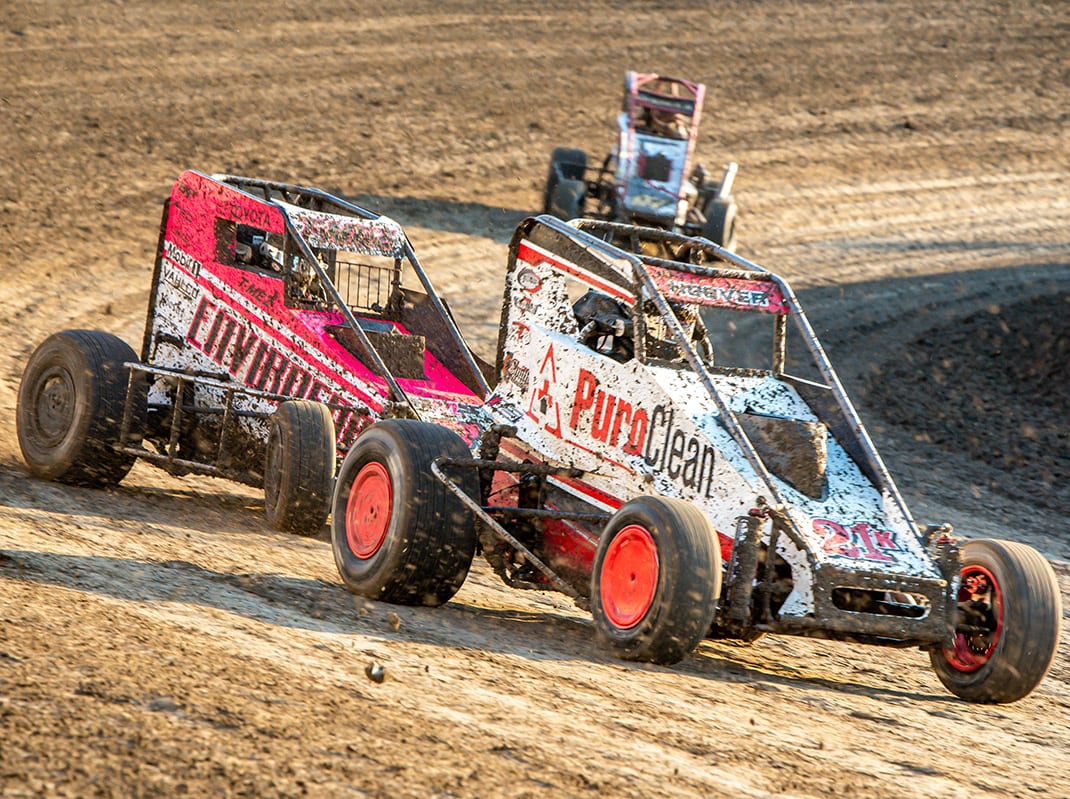Chase Johnson put his foot in the door of the national auto racing scene two years ago during the Lucas Oil Chili Bowl Midget Nationals.
The Californian posted a podium finish during his preliminary night before garnering a top-10 run during the finale. The career-best outing came during an event that featured more than 300 competitors. Since then, Johnson won numerous races, claiming wins in winged sprint cars, non-winged sprint cars, midgets and outlaw karts.
Johnson captured the sprint car portion of the Turkey Night Grand Prix to cap a career-best 11-victory season last year. In fact, he was victorious in six different divisions with five different teams.
The success catapulted Johnson into what he believed would be his best opportunity to shine against the best competition. This season was supposed to be filled with winged sprint car, non-winged sprint car and midget races with the top series from coast to coast.
However, the COVID-19 pandemic that arrived in March changed everything.
“I had like 102 races on the schedule,” Johnson said. “I think I’ll probably end up with about 40 to 45 races.
“It’s super disappointing because that takes out all those opportunities. That also cuts out a learning year of being at new tracks. You’re not only cutting into races and pay, you’re cutting experience and learning,” Johnson explained. “For a driver like myself that’s trying to break onto the national scene and run this many races with this many teams, it is really frustrating because this doesn’t come every year.
“I work hard to make these opportunities happen. You never know what the future holds. You work extremely hard to get these opportunities and to impress people. You work hard to get to this spot and to have all of it shot down, it sucks. You can only hope those opportunities or more opportunities will be there next year.”
Johnson is one of hundreds of drivers who have had to adjust on the fly during a wild year that featured nearly three months off. His home state of California has been subjected to some of the most stringent government regulations on returning to racing. Johnson, who works full time in California and has to fly to races around the country, notes he will likely not reach a dozen starts in California during the entire season — the fewest of his career.
Fellow sprint car driver Roger Crockett has been hit on two fronts; not only has his racing slowed but so has his racing-based embroidery and graphics business.
“Some people got to race more,” he said. “We couldn’t because a lot of the races were in Pennsylvania and stuff. It’s also affected our embroidery business. It made it hard financially to travel somewhere to race. Once business picked back up, there wasn’t necessarily a ton of places to go. It’s kind of made the schedule a mess.”
It was Crockett’s second year of running the Lucas Oil ASCS National Tour, which got four races in before the pandemic arrived in the United States in the middle of March. The series was then dormant until late June. Additional races throughout the summer and fall were canceled because of the pandemic as well, leaving the series with its lowest number of completed races in series history.
“It was a chore this year,” said ASCS national director Matt Ward. “We were supposed to have 45 to 48 races. If we run out, we’ll only end up with 19. It was difficult for all of our teams. They raced where they could when they could. It was just a crappy year.
“Luckily, all of the National Tour races we’ve been to have been allowed to have fans. Every one of those races has been packed. You can definitely tell the fans are missing it and wanting to get out. I think that’s helped the promoters this year. Most of the tracks have the Plexiglass deals and keep reminding everyone to socially distance. As for the government telling us if we can race or not, we’ve been leaving that up to the track’s discretion.”
POWRi Racing owner Kenny Brown has been in a similar boat as the season has required him to adapt on a daily basis.
“I think for us I wouldn’t say how well we were able to, it was the tracks working with us,” Brown said. “We were able to move our schedule around and run in areas that were more open without as tight of restrictions. At the very beginning, we went out west and went to more rural areas. We were blocked out of some parts of Illinois and Wisconsin. My hats off to the tracks.
“I think I’m on version No. 10 of the schedule. All in all, we’ve come out of it pretty decent. We were able to complete probably 75 to 80 percent of our races,” Brown continued. “In March and April, it was eerie because our first race is in March. Right off the bat they shut us down. We thought this will pass. It wasn’t until May that we were able to really get going. For 60 days we didn’t know what was happening.”
Click below to continue reading.
